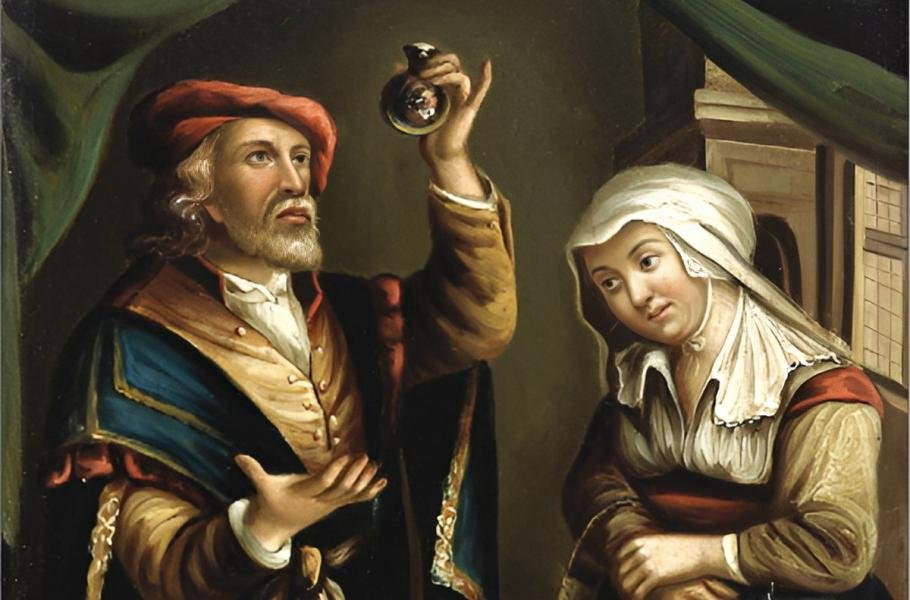From the beer test to urine prophets, ancient and recent history has known many bizarre methods of determining pregnancy…
Take a look with us at seven amazing methods used to determine pregnancy throughout history. Since ancient times, people have suspected that another condition is somehow connected with urine. Today’s pregnancy tests are also based on the detection of the presence of the hCG hormone, which cannot be found elsewhere than in the urine of expectant women. But the discovery of hormones is only a matter of the last hundred years. It cannot surprise us that recognizing a woman’s pregnancy in time was also essential in the past. Whether it was conception in royal families, or early detection of the consequences of accidental romances or flings. Therefore, people relied on often completely bizarre methods to detect pregnancy even before the round belly showed up. And that sometimes it really was „science“!
Peeing on grain
The earliest records of attempts to develop a reliable pregnancy test come from Egypt. During the time of the so-called New Kingdom (16th-11th centuries BC), the sages of the time advised women to prepare two separate sheaves of barley and wheat. What’s next? Well, piss on them. And then? Wait.
The Egyptians believed that a pregnant woman carried a kind of life-giving substance within her, which she also secreted in her bodily fluids. The results could only be seen after a few days. If the barley sprouted earlier, the woman was expecting a boy. If wheat, the mother could look forward to a girl. And if nothing sprouted? The diagnosis sounded clear: you are not pregnant.
In 1963, modern scientists repeated this experiment to resolve the historical controversy. The results found were surprising: in 70% of cases, the grain really germinated if the woman was pregnant! On the contrary, it did not react in any way to the urine of men or women who did not conceive. The ancient Egyptians simply had a good idea!
Beer test
Egypt once again. How to find out if a woman is expecting? Put her in a bucket full of beer! At least that’s how certain ancient Egyptian scrolls describe it. The woman was placed in a bath with beer and fermented wort. It is known that pregnant women suffer from a somewhat more sensitive stomach from the early stages. It was believed that if a woman began to vomit from a combination of fermented odors, she might be pregnant! From how much nausea she felt, it was then judged when the expected offspring would come into the world.
Onion poultice
Even the ancient Greeks went a little less conventionally to detect pregnancy. A popular method was to insert an onion into the vagina of the supposed mother. To make matters worse, she had to be left there overnight. So how was the pregnancy recognized? If a woman had onion odor from her mouth in the morning, it was determined that she was not pregnant. Greek logic was clear in this regard. If there were to be a fetus in her womb, it would certainly prevent the odor of the embedded onion from passing through the woman’s bowels. On the contrary, if a woman smelled in the morning, it was clear – there must be a baby inside, because of which the onion did not „smell“ all the way to her mouth!
But there were also friendlier variations of this test. Perfumed substances, for example, were used in a similar way. It was certainly a bit more pleasant not only for the other members of the household. However, various urine tests were also practiced in Greece.
Magic ring
While many pre-scientific methods were based on the knowledge that pregnancy was somehow (albeit as yet unrecognized) linked to female urine, various less advanced cultures around the world relied more on magic. The magic ring method appears in nations across the planet and across time. Apparently, this is a method of detecting pregnancy that was already practiced in prehistoric times.
The experiment consists in observing the oscillation of a ring suspended on a string. This ring (often a wedding ring) is placed like a pendulum over the abdomen or genitals of a lying woman suspected of pregnancy. If the ring moved, the woman was supposed to be pregnant. Depending on the direction and speed of the oscillations, other aspects of the pregnancy were predicted, as well as the future character of the offspring.
In medieval and early modern Europe, there really was a specialized profession of doctors who called themselves urine prophets. Their main investigative tool was sight. So it was a so-called uroscopy. By thoroughly analyzing the color and consistency of urine, they determined the probability of pregnancy according to complex keys. But the sense of smell also played an important role. A certain smell could indicate a positive or negative result. Whether the prophets also used taste is not recorded. From 1552 comes a description of the urine of a mother blessed with a child: „Clear, the color of a light lemon to whitish, with foam on the surface.“
But sensory detection was not the only tool of the urine prophets. We know, for example, about the so-called needle tests. A metal needle was inserted into a bowl of female urine overnight. Then it was enough to wait to see if the sewing tool would rust or not. If rust appeared on the needle, it could be expected that the family would soon have a new offspring.




